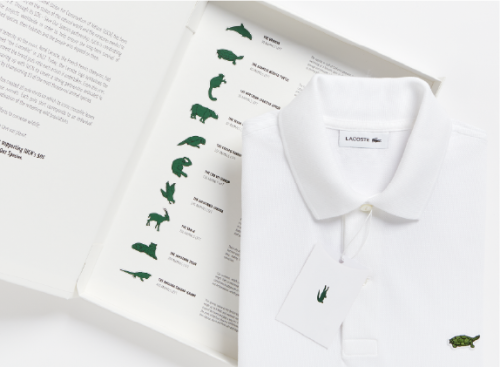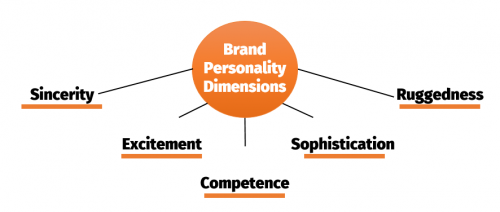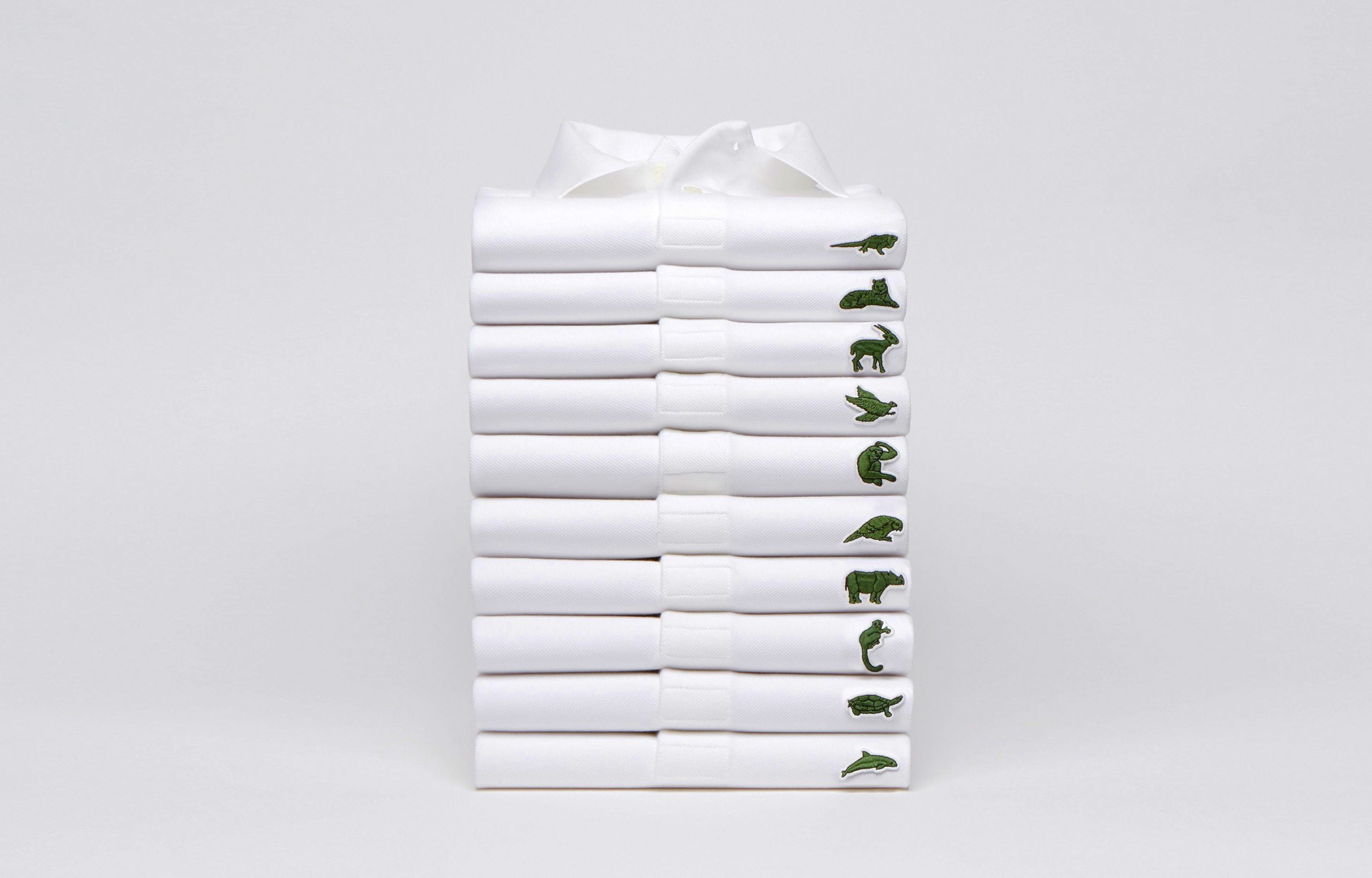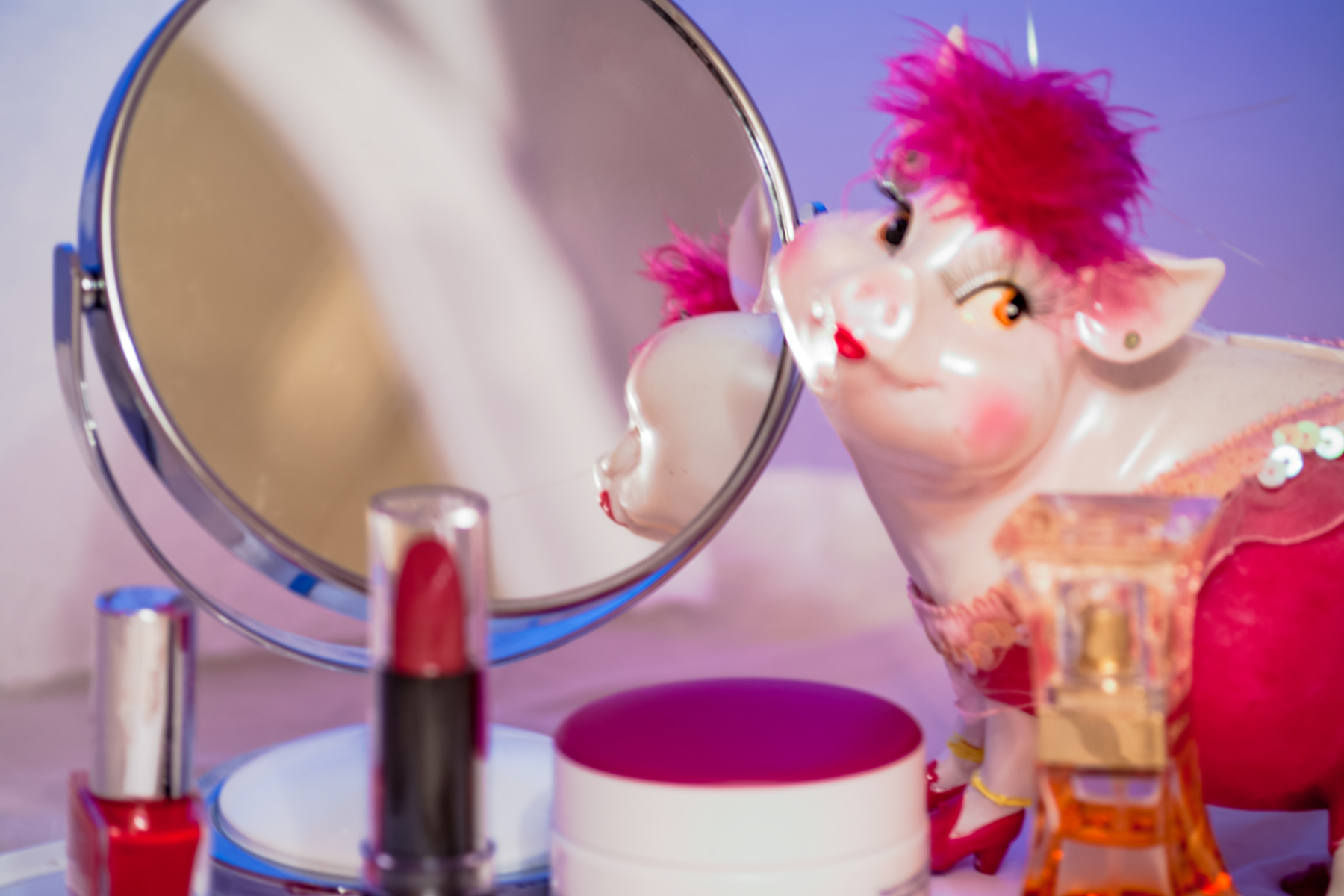In case you missed it last month, we took a look at sustainability and why it should be at the heart of your brand strategy. You can read that here. In brief, being a sustainable business is about a whole lot more than cycling to work and putting things in the correct bins. Sustainability for brands is being ethical in everything that you do, striving for consumer and employee wellbeing, delivering economic value, and looking after the environment.
When it comes to actions, this can be fairly subjective depending on what kind of business or brand that you are. More formalised programmes such as B Corp exist to help guide businesses to becoming a force for good. But when it comes to marketing your business sustainably, or engaging in sustainability marketing, where do you start? What does it look like?
In today’s blog we’re looking at brands who’ve tackled sustainability head-on and set a great example not only in terms of execution, but sincerity too. If you’re new here, you’ll know that sincere and honest branding is what we’re all about. It’s particularly vital when dealing with such important commitments such as being a sustainable brand or offering a sustainable service.
Before we dive in, let’s take a moment to understand the purpose of a sustainable marketing campaign. The naysayers will have you believe that campaigns such as these are simply virtue signalling – brands jumping on a metaphorical bandwagon to appeal to the younger demographic who typically align themselves with brands who engage with topics such as climate change, global warming and net zero.
In reality, many of the brands engaging in sustainable campaigns have made clear their views on the world, people and the environment long before. After all, we live in an age where frauds and fakes are almost immediately called out. ‘Greenwashing’ is sadly prevalent and there are indeed brands engaging in sustainability marketing just ‘for the likes’.
However, brands such as Lego, Apple, Patagonia and Ben & Jerry’s have a long history of social action. They are now simply acting upon the science and research that is undeniably pointing towards global warming, and using their platforms to not only spread a message, but demonstrate the changes they’re making in their own operations to make the world a better place.

Patagonia: ‘Don’t Buy This Jacket’
Iconic? Yes. Revered? We think so. This 2011 campaign started as a full-page ad in the New York Times and was a direct comment on the excessive consumerism seen in fashion and other industries. Several paragraphs gave readers insight into just how intensive the garment-making process can be. Even with an eco-conscious approach to manufacturing, 130 litres of water were required to produce just one jacket.
So what’s the message here? Are they really telling you not to buy their product? Well, yes and no. The ‘Ronseal’ side of the campaign certainly discourages you from running out to buy a new jacket unless you really need one. But on the other hand, we are being told to ‘buy better’. And here lies the marketing: Patagonia’s ‘Common Threads’ initiative, broken down as ‘reduce, repair, reuse, recycle’.
By purchasing a higher quality product (with undoubtedly a higher price point), we are reassured that the garment is not only manufactured with the environment and people in mind, but it will last longer and be repaired should it become damaged. The brand even goes one step further and re-sell clothing made from recycled Patagonia gear.
This impressive effort combined with their history of activism around racism, equality and even politics, puts Patagonia front of mind when we think of brands truly walking the walk when it comes to sustainability.

Lacoste: Save our Species
Whilst wildly impressive, Patagonia’s campaign certainly won’t win any design awards. On the other hand, Lacoste’s efforts to raise awareness of endangered species is exactly the kind of creativity that we like to see.
Known for their familiar crocodile motif—a small, green, embroidered logomark—the brand ‘disappeared’ the croc and replaced it with turtles, lemurs, rhinos, condors, tigers and more – still in the familiar forest green colourway.
These polo shirts were limited, and all proceeds were donated directly to the preservation of each species. Whilst this is a superb and commendable example of sustainability marketing, it’s more specifically known as ‘cause marketing’, which has since become a pivotal part of many organisations’ brand strategy.
This brand-centric approach to campaigning is a true example of sustainability marketing. It’s rare to see brands changing their logomark in such a distinct way. Of course, many brands add LGBTQIIA colours to their social media icons, but in recent years this movement has drawn criticism from campaigners who want to see more than just a 30-day ‘social media takeover in order to drive cultural change
Lacoste have put their money where their mouth is and raised awareness of causes many of us may not have even been aware of at all. Their no frills campaign puts funds directly where they’re needed and the ‘limited run’ is a strong example of scarcity marketing. Great work.

Pokemon Go: Earth Day Cleanup
Arguably, the first two examples don’t require much of a response from the consumer. Simply by a garment, or don’t. That’s why this 2018 campaign from Pokemon Go’s creator, Niantic, really stands out to us.
Partnering with 46 non-profit organisations around the world, the game developer encouraged volunteers to take part in 41,000 hours of litter picking, resulting in a staggering 145 tonnes of rubbish being collected from streets and parks.
Pokemon Go is a mixed reality game in which users hunt ‘species’ via their smartphone’s camera along with its GPS and map capabilities. Users are already outdoors and active, as a basic requirement of the game. By mobilising their fanbase for a good cause, Niantic were able to make a huge difference to countless public areas all over the world, as well as engaging with a young-middle-aged audience on a particular environmental issue. Players worked in groups of upto 2,500 people and were rewarded with in-game achievements.
This ‘guerilla’ style campaign is a tremendous example of integrating an important cause seamlessly into an existing channel. I mean, why wouldn’t you want to take part if you’re already a Pokemon Go player?
The campaign was such a success that it has been repeated for multiple years, and we hope to see this continue, and for other brands to take note of what you can achieve on a community level.
Honesty is the best policy
Of course, everything we’ve looked at here will have had a sizeable budget. But the essence of these campaigns and the message behind them is something that can be applied to a business of any size. Whether that’s taking a more sustainable view on how your brand is positioned against the competition, diverting funds to direct action, or bringing your customers together to make a change, a lot can be done without the need for big, brash, bold campaigns. It’s the sincerity that counts, and it’s what lands with audiences most of all.
The final and perhaps most important point to consider here harks right back to our core Journey message of ‘honest brands’. To appear to be sustainable, you must of course be sustainable. Change starts at the core of your business – NOT in your marketing. You can’t shout from the rooftops when there’s skeletons in your basement, so do your internal work first, and only then you can start to think about talking about sustainability externally and making it a part of your brand.
Where to begin? Start by measuring, researching and understanding. Where do you stand as a business? What do your emissions look like? What kind of work are you doing and what impact does that have on the world? What does a good client/good supplier look like to you? How do you support not only your own staff, but the community too?
These questions are just the tip of the iceberg, but for businesses with a desire to make a genuine change, they need to be answered. These are also questions you’ll need to answer should you ever consider becoming a certified B Corporation, and if that’s not on your roadmap any time soon, it’s still a great framework to follow.
After all, who wants to be an unsustainable business?
back to all news or you may also be interested in the news below:
TWEET OR TWO
To ensure you stay in the loop and receive our news, updates and general musings hot off the press, follow us on Twitter now. We promise not to bombard you!
Sustainability. That’s walking to work in the morning and turning the lights off when you leave, right? Well, not quite. In fact, sustainability stretches far beyond being an eco-conscious company. The sustainability movement is just as much about people, culture, wellbeing and society as it is about carbon and recycling.
Let’s start big. A great overview of the entire topic is the UN’s Sustainable Development Goals. It’s worth taking some time to read them because not only do they break it down into singular steps that are easier to understand, but they give a clear overall message that we can all get behind: Sustainability is making the world a better, safer and more equal place to live.
Why is sustainability important to brands?
Being environmentally conscious is nothing new. Every single one of us has at some point considered our impact on the world, and what changes we can introduce to our own lives to make it a better place. That might be something as small as using a ‘bag for life’ or something as big as fitting solar panels to your home.
But remember, we’re talking about more than plastic usage and green energy when we talk about sustainability. Today’s brands are not only incorporating wider social and environmental action into their external marketing, but their internal culture too.
A recent study from Stanford University showed that 67% of business school students want to see sustainability incorporated into their future roles. It’s clear that employees and customers alike are starting to vote with their feet when it comes to where they want to work or shop. Companies and brands seen to be standing still will ultimately be shunned for organisations who are making clear steps towards being a more sustainable entity.
For arguably the first time in history, we are seeing a combination of moral responsibility and human desire radically changing the way that businesses operate. So what are we saying here? What is the bigger picture if it’s not being a cleaner, greener company?
Being a sustainable business is:
- Being ethical in everything that you do
- Striving for consumer and employee wellbeing
- Delivering economic value
- Looking after the environment
- Being inclusive, diverse and accessible
- Understanding and following governance
- Building a business to last
Habits are changing. What can brands do about it?
Let’s start from the top. Using the list above or the UN’s Sustainable Development Goals, find out how you score. Examine your business and be super critical and mega analytical. How and where do you recruit? What have you been doing to reinvest in the local community? What kind of suppliers do you use? How do you support those with accessibility issues or disabilities? Are you offsetting your carbon?
By beginning with measurement, you can begin to see where the gaps are. Only then can you set targets. Some of these may be something as tangible as providing more space for bikes so that more of the team may cycle to work. Others might be supporting local causes in the community, or engaging in a reforestation scheme via someone like Ecologi.
Shout about it, but do it because you mean it
You can be forgiven for being a little jaded when it comes to big companies doing things ‘for good’. Let’s take Amazon for example. Switching their packing tape to one that’s entirely recycled is great. Giving workers on 12 hour shifts just a couple of bathroom breaks is not great. It’s a grotesque comparison but it’s real and it’s called greenwashing.
This is why it’s important that sustainability runs through your entire business like a thread. It’s holistic by nature, so it’s no good implementing one thing whilst failing at another. Customers will sniff out irregularities just like this, so bake your sustainability message and actions into your brand and marketing, and do it with sincerity. Do it because you want to do it, not because you feel you have to.
Any business should be a force for good. That’s surely why you started your company in the first place. Part of being a force for good, whether you manufacture products or provide legal services, is doing good.
And that’s where we find ourselves full circle. Sustainability at its very core, is doing good.
Getting started
If you’re still head scratching by this point, we’ve got a few pointers. First up, take a look at a couple of higher profile companies and what they are doing in terms of sustainability.
Patagonia will repair any piece of damaged clothing that you send back to them, as long as it has their name on it. This is a great example of supporting a circular economy and moving us away from the relentless forward march of fast fashion consumerism.
Ben & Jerry’s, despite being majority owned by Unilever, still take an activist stance against social injustice, inequality and environmental issues,
You’ll notice that that these two examples aren’t so much about the company itself (of course, they do the basics like turn the lights off, offset their emissions and such like), but instead, they are investing time, money and effort into figuring out what they can do to improve the longevity of a sale, or how they can lend their voice to changing the world. It’s an outward effort to improve people’s experiences in the world.
What if I’m a small brand?
A sustainable brand has meaning and purpose no matter what its size. A brand can be perceived as sustainable by credibly conveying its benefits in the smallest of ways. Perhaps it’s a percentage of all sales being donated to a good cause, a great example shown from our client Wilson Partners who do this through the B1G1 initiative. Another client of ours, Carless + Adams, recently produced a white paper to start some overdue conversations about sustainability in the care sector.
It can be more straightforward approaches too, such as simply switching to a fully remote working model. Or maybe it’s a live Ecologi dashboard so customers can keep up with your reforestation efforts — small things on their own but collectively they can make an enormous difference.
It’s more than just a warm feeling
It’s human nature to feel good after doing good. Why wouldn’t you want that fuzziness floating in and around your brand each and every day? In addition, you’re building trust and empathy with your audience. Customers will look at you and your efforts and favour you over the brand next door that hasn’t given sustainability a second thought.
Doing good is good for business.
It’ll give you more than just a warm feeling.
You can make the world a better place.
We’d like to talk more about sustainability over the coming months. We have some great examples of how our clients are progressing on their own sustainability journeys, so be sure to keep an eye on our blog and social feeds.
See you next time.
back to all news or you may also be interested in the news below:
TWEET OR TWO
To ensure you stay in the loop and receive our news, updates and general musings hot off the press, follow us on Twitter now. We promise not to bombard you!
The internet is crowded. And that’s an understatement. News sites are sending your laptop fans into overdrive because they are packed heavy with ads. Promoted posts are worming their way into your social feeds like… well, worms. It’s even a challenge to get through a YouTube video without being blasted by a sponsorship message of some kind. (Needless to say, this blog isn’t sponsored by Squarespace.)
But let’s be clear – we understand the need for ad revenue, affiliates and partnerships, particularly when it funds many of the free content or apps that we use during the average day. We also understand that the internet is just as much a marketplace as it is a place for recreation and research. Even so, there are so many brand messages thrust upon us that it can be a little overwhelming.
Let’s get some stats in here before someone pipes up with “It’s not that bad, is it?” In 1970, the average American was exposed to up to 1,600 ads per day. In 2021, it was estimated that the average American saw up to 10,000 ads in one day – and that’s double 2007’s estimate of 5,000.
How to get noticed in brand advertising
In the world of ridiculous budgets, Superbowl ad breaks and celebrity endorsements, the answer is money, plain and simple. For a big brand to get bigger, they increase their marketing spend and what do you know, we’re all talking about it on Slack or around the watercooler the next day.
But we don’t work with Aldi, Marmite or John Lewis. We work with SMEs, legal firms and medical organisations. Whilst these businesses are successful in their own field, they’re not spending millions of pounds on an extended Christmas commercial or a limited run of novelty packaging. And we like to think that even if they did have the budget, they wouldn’t do it anyway.
Honesty is the best policy
You may have seen or heard us talk about #honestbrands. It’s our unofficial tagline and something we’ve stood by since the day Jeremy and James set up shop. We work with brands who have something authentic and genuine to say, and want to say it in a way that is principled and sincere. We do this because we believe that authenticity is what customers are really looking for. And we do this because in a crowded marketplace, you can be heard, noticed and remembered by being your true self.
Breaking it down
We used some nice words there (authenticity, genuinity, principality, sincerity), so let’s use them to set out how and why an #honestbrand is key to cutting through the noise, attracting prospects, and converting them to loyal customers..
Authenticity
The bedrock of it all. And for us, it starts with respect. Every brand or business that we work with has an inordinate amount of respect for their clients and customers. To show respect to your customers you must understand their personas, their expectations and their needs.
Tone of voice, accessibility and usability all play a key part in putting out a clear marketing message. Awareness, responsiveness and nimbleness play a crucial part in understanding your audience and acting proactively when something needs to change.
Examples of brand authenticity:
- Being consistent with your story and your service
- Delivering real value to your clients
- Treating employees and customers with respect
- Being transparent around issues and problems
Genuinity
Genuinity is avoiding dishonesty at all costs. That might be something like paying for fake reviews, manufacturing an origin story as part of your brand, selling false promises, or even some of the more nitty gritty, such as passing customer data to third parties.
We help our clients show their genuinity by helping them discover their story. We often hear something along the lines of “But why would our customers care?” The truth is, customers are looking to buy from a brand they feel they can trust, and that all begins with the very human practice of simply telling them who you are and where you’re from.
Examples of brand genuinity:
- Avoiding unethical marketing and SEO practices
- Avoiding misleading user experience design
- Telling your audience exactly who you are
- Living up to the promises you make in your marketing
Principality
It sounds quite authoritarian, doesn’t it? Principles are fundamentally a code of conduct, which in brand and marketing world, equates to values. We’ve spoken extensively about brand values in several recent blogs, which you can check out via the following links:
The golden rules of branding
If you don’t understand your brand, how can you position it?
Why simplicity is key when considering how your brand reflects your business
Examples of brand principality:
- Setting clear and attainable brand values
- Apply them to how you work with and hire your staff
- Apply them to how you treat your customers and clients
- Apply them to your socioeconomic responsibilities as a business
Sincerity
In 1997, David Aaker, a well-recognised theorist, published the 5 Dimension Brand Personality Model. It emphasises the importance of identity and offers unique solutions to building a strong brand. Today, the paper’s concepts are still widely used by many leading brand agencies and strategists. In Aaker’s model, sincerity is a key part of brand personality.
Sincere traits include being down-to-earth, honest, wholesome and cheerful. This differs from honesty in that it’s the way things are communicated rather than what is communicated. For instance, a business saying “We are a B Corp so we are better than other companies”… that’s not sincerity. Don’t be like that.
Examples of brand sincerity:
- Acting humbly around your merits such as awards and accreditations
- Showing interest, support and compassion to your clients and customers
- Remaining true to your beginnings or your ‘roots’ as the business grows
- And most of all, sticking to your authenticity, genuinity and principality

Be an #honestbrand in 2022 and beyond
These four pillars form the foundation of an #honestbrand. To build upon those foundations, businesses need people. Those people are everyone: the founders, the marketing team, the HR team, the sales team, the call centre team, the front of house team.
Whilst every business is different, the pattern remains the same. Good leadership, strong values and a clear vision pave the way for a business that can expect low staff turnover and loyal customers.
If you’re looking to put words into action, or you’re ready to start walking the talk and the walk, consider working with a brand agency like Journey. We begin our client relationships with a discovery period in which we can really understand a business, its people and their customers. From there, we can make informed and validated decisions around design, brand, marketing, content and much more.
It’s all about the Journey.
back to all news or you may also be interested in the news below:
TWEET OR TWO
To ensure you stay in the loop and receive our news, updates and general musings hot off the press, follow us on Twitter now. We promise not to bombard you!
Keep it simple, stupid. A phrase for all seasons, situations and scenarios. It’s never nice to be on the receiving end of it, so please take this intro in jest.
Simplicity should be a brand’s best friend. Whether a fledgling startup or a big, bustling business, a simple brand will always triumph over an identity that is confusing, convoluted and overly-complicated.
In this blog we’re not just going to be talking about brand design and identity, but culture and values too. Because a ‘brand’ is every part of your business, not just the logo on your letterhead or the particular shade of yellow on your business cards (“The tasteful thickness of it. Oh my God, it even has a watermark…”).
Let’s start with design
Between us, we’ve probably taken more logo briefs than Paul Rand and Saul Bass combined, and more often than once, we’ve found ourselves talking potential clients down from the lofty heights of barely readable cursive fonts and ill-conceived illustrations.
Take a look at some of the greatest (or at least most recognisable) logos of our time. Braun. Apple. BBC. Audi. They are cool, they are small, and most of all, they are simple. Of course, they have earned their place in the logo hall of fame, but even the earlier iterations of the Nike logo were a hot mess. Many of the better-known logos that we know today have been through a journey of simplification of their own, but that’s not to say brands need to come off the starting blocks with something overly-designed.

But don’t be fooled – this isn’t a cost-saving exercise. We certainly aren’t going to draw a quick ‘swoosh’ in Adobe Illustrator and hand it over for £300. But we also won’t be charging an exorbitant price for what seems like very little work. To us, it’s about research and balance. We will take the time to understand our clients, their values, their product and what they’re trying to achieve and with whom, and we’ll balance all of that in a logo (and wider brand) which works in a modern marketplace.
You may roll your eyes when designers push back on your ambitious identity design ideas, but remember, we’ve been here before, and this is what we do. Trust the process and you’ll be happier with the outcome, and more so, your audience will too.
Elementary, my dear Watson
Beyond the logo and arguably more important, are your brand elements. These could be anything from a bespoke set of icons, to pre-written taglines and headlines, or even your colour palette and font pairings. Once again, we don’t just throw the office dart at a Pantone chart and pick a shade. Colour science is important, as is perception and accessibility. Your brand is the coming together of beautiful design, imagery, colours and copywriting, which tell the user what they can expect from your organisation, as succinctly and as authentically as possible.
Sure, certain colours won’t work well with one another, and some are just meant to be. Some colours have connotations or associations, such as every IT company in the whole wide world using blue, or green being the agreed colour for sustainability and ecology. Accessibility should be a priority too. Colour contrast (and typography choices) can make or break the user experience of somebody with visual impairment. Keep it accessible.
Add too many brand elements to your toolkit, and your marketing teams will get confused and ultimately make mistakes. Add too few, and a rogue content designer may take it upon themselves to use unapproved illustrations or symbols, or worse-still, ClipArt. (Instant dismissal, surely.)
A brand toolkit should be expansive enough to convey meaning and messaging in a way that is simple and straightforward. Clear brand guidelines should help anyone from any area of the business to understand what can and cannot be used together. And with a gatekeeper or brand team to keep an eye on it all, consistency will remain present across all of your digital and physical channels.

Value the value of your values
A good brand will live and breathe its values in everything it does, from the internal company culture to the customer onboarding process. We absolutely love brands who get this right, and we love to help brands get this right too. Let your customers know what to expect when they deal with you, and don’t deviate from that promise.
A well thought out and thoroughly tested customer journey that is a true reflection of your business, is what will ultimately win you customers and/or sales. A poorly thought out or confusing customer journey, particularly one that doesn’t feel aligned with your overall brand, can push a customer away to the competition.
This is where a brand, a brand team and ultimately your brand agency too (hiya) should be doing the heavy lifting. If you’ve already put a great deal of time, thought and expense into how your brand looks, you’d be shooting yourself and all of your colleagues in both feet if you didn’t spend time considering how your brand feels.
Customers, employees and users are looking for honest brands more than ever before. Customer loyalty, despite it not being a 1950s high street, is still very much alive and well, and websites like Trustpilot and Glassdoor make it very easy to unearth the ‘nasties’ in many industries.
If you’ve spent time building a vibrant, diverse and positive workplace culture, it would be a tremendous shame to exclude that from your brand. Even so, we’ve been in several brand workshops where our clients say things like “But why would our customers care about who we are?” Well, for many it’s almost all they care about.
Demonstrate to the wider world how you’re a better organisation than ‘them next door’ and do it in a way that is simple and sincere. Remember, audiences have already forgotten that they have an attention span before they even hit your website or open your app, so it’s key that you get across what you’re trying to say concisely, not only in word count, but in visual design too.
It’s great that you want your brand’s personality to come across, but don’t overdo it. Too much copy, and you’ll lose your audience. Too much wordplay, and you may lack sincerity. Too few photographs, and you’ll lack the human touch.
Keep it simple, stupid
We are reiterating ourselves because it is just so important. Take a look at our portfolio of work and you’ll see a common theme. Clear, accessible design that lets brands and their personalities speak for themselves.
In a world where add-ons, upgrades and uploads are flooding our minds with realms of information, it pays to keep it simple.
You’re not stupid. Sorry we called you stupid.
If your brand needs simplifying or you’re having trouble saying what you mean, let’s talk. Fill in the form at the bottom of this page and we can set up a call or a meeting.
back to all news or you may also be interested in the news below:
TWEET OR TWO
To ensure you stay in the loop and receive our news, updates and general musings hot off the press, follow us on Twitter now. We promise not to bombard you!




